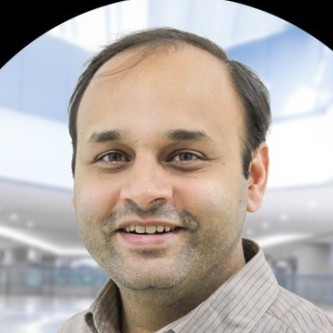When making technology choices during the product engineering and development process, it is important to adopt a problem statement-driven approach where goals are at the driver’s seat and technologies only support them. Swirling in the vortex of myriad product engineering and development tools, technologies, trends, methodologies, and best practices makes it challenging for architects and developers to look at the big picture when presented with a problem. While tools and technologies are the underlying enablers, it is important to keep in mind that they are only the means to the end.
Product engineering refers to the entire product lifecycle starting from ideation, architecture, design, development, all the way up to product deployment, support, and sustenance. Technology agnostic problem solving should be the underlying mantra through all these stages. While traditional software product engineering practices are more rigid, the modern agile product development methodologies are more adaptive and can quickly pivot to resolve any problems with current design.
It is quite natural for product development teams to gravitate towards their areas of expertise, but technology choices made from such positions of comfort could lead to unfavorable situations such as the solution design being dictated by the technology, business processes tweaked to fit the tool’s capabilities, technologies blamed for functionality lapses, technology or vendor lock-ins, unnecessary complexities when square pegs are force-fitted into round holes!
Ensuring Objectivity
Problem Statement
It is critical to go back to the basics, articulate the problem, and frame it with a problem statement which would serve as the backbone of the solution. The statement should address the what, why, when, where, and who of the problem. This would help set the context, bring everyone on the same page, and establish the goals and framework for execution.
Roadmap
The roadmap gives a bird’s eye view of the ecosystem, integrations, dependencies, and importantly how, where, and when the solution will be fitted in to accomplish short-term and long-term goals. Each goal needs to have clear objectives and success criteria. This will help the technology roadmap chart the path from start to finish, enable the right levers, quantify expected outcomes, minimize cost and resource leakages, highlight gaps, and serve as a constant reference point for solution validation. For instance, if the goal is user retention of an application, examples of objectives and success criteria would be application reliability 99.5%, user experience 99% [this second one doesn’t seem to be an objective measure which can be expressed in percentage], time spent by a user, time taken by certain critical sections to load, etc.
Technology Considerations
The tech team needs to have expansive knowledge about the pros and cons of tools and technologies available in the market to arrive at a mature and well though-out decision. Some things to ensure:
- Feasibility of the tool/technology
- Suitability for the nature of business, industry
- Seamless integration with current IT ecosystem
- Flexibility, scalability, maintainability, cyber resilience
- Empathy for user preferences, resistance to change
- Adherence to scope, availability of expertise, budget, timeline
New product development is a significant investment for a business, demanding due diligence for the highest RoI. Just like how we wouldn’t use a toothbrush to paint walls, we need the right tools for any job. The technologies used will largely determine the success of the solution – which is reason why the solutioning process needs to be technology agnostic!
With our R&D driven product development approach and deep understanding of core and next-generation technologies, GS Lab | GAVS can help you transform and develop new products at scale. Having developed more than 300 products, many of which are first-of-their-kind, our product engineering teams take ownership, go beyond the call of duty, and add value to our customers. Our expertise across core technologies such as cloud, networking, and communications helps us improve your product performance dramatically while reducing costs. For more information, please visit https://www.gslab.com/product-engineering-and-development.

Author
Mandar Gadre




